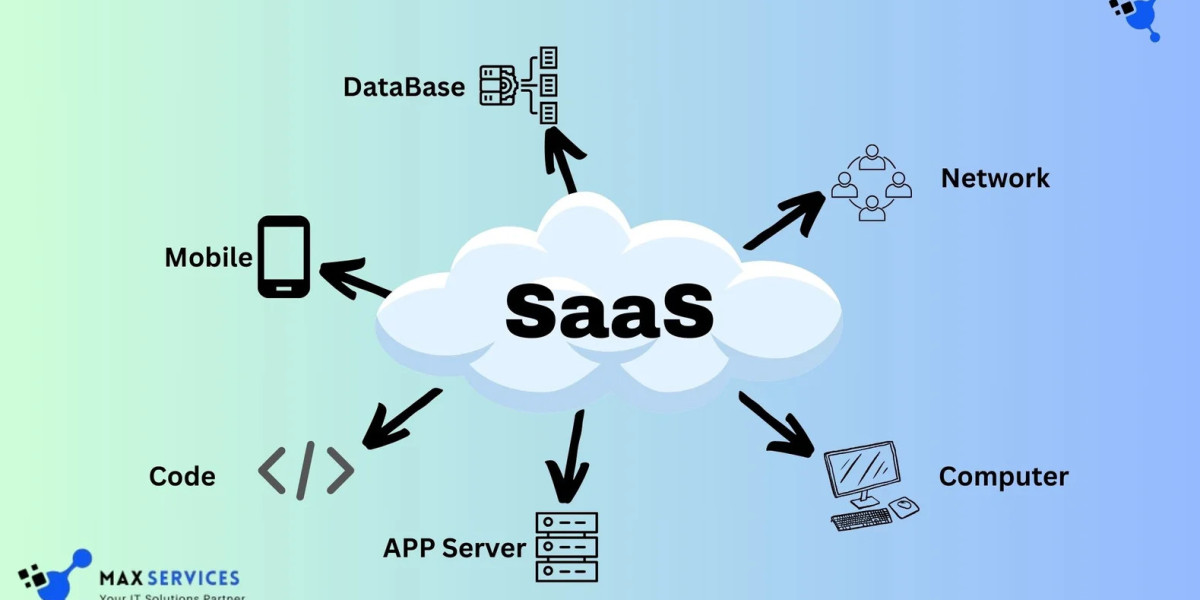The Rise of SaaS-Based Software Development
SaaS has revolutionized the software delivery model by hosting applications on cloud servers, granting users easy access via the internet. Unlike traditional software requiring local installations and ongoing maintenance, SaaS solutions provide:
Cost Efficiency: Lower upfront investment with subscription-based pricing.
Automatic Updates: Continuous enhancements without user intervention.
From startups to global enterprises, SaaS has become the preferred method for software development and deployment. But what lies ahead for this rapidly evolving model?
Key Trends Shaping SaaS-Based Software Development
1. AI and Machine Learning Integration
Artificial Intelligence (AI) and Machine Learning (ML) are transforming SaaS by offering:
Personalized Experiences: AI-driven recommendations and content delivery.
Advanced Analytics: Predictive insights to enhance decision-making.
Automation: Intelligent automation streamlining workflows.
For instance, CRM platforms like Salesforce leverage AI to predict customer behavior and optimize sales strategies. In the coming years, AI-driven SaaS will be instrumental in providing businesses with a competitive edge.
2. Industry-Specific (Vertical) SaaS
While traditional SaaS serves broad audiences, vertical SaaS caters to niche industries such as healthcare, finance, and education. This specialization enables tailored solutions with built-in compliance features. Examples include:
Healthcare: SaaS platforms optimized for telemedicine and patient data management.
Education: Learning Management Systems (LMS) designed for virtual classrooms.
As businesses demand industry-specific solutions, vertical SaaS is expected to experience substantial growth.
3. Low-Code and No-Code Development
The rise of low-code and no-code platforms is democratizing software development by enabling non-technical users to build applications. These platforms feature drag-and-drop interfaces and pre-built components, leading to:
Faster application development cycles.
Empowered citizen developers.
Reduced development costs and quicker time-to-market.
4. Microservices Architecture
SaaS providers increasingly adopt microservices architecture, offering:
Flexibility: Independent updates and scalable components.
Resilience: Isolation of failures to specific services.
Speed: Faster deployment and iteration cycles.
This approach allows SaaS companies to build robust and scalable applications efficiently.
5. Multi-Cloud Strategies
Dependence on a single cloud provider poses risks like vendor lock-in and downtime. Multi-cloud strategies mitigate these risks by distributing workloads across multiple cloud platforms, leading to:
Enhanced Reliability: Improved uptime and disaster recovery.
Cost Optimization: Selecting cost-effective cloud services.
Compliance Assurance: Meeting diverse regulatory requirements across regions.
Innovations Driving the Future of SaaS
1. Edge Computing
SaaS applications utilizing edge computing will:
Enhance real-time data processing capabilities.
Improve user experiences in remote locations.
Support IoT-driven applications effectively.
2. Blockchain Technology
Blockchain ensures secure, transparent, and decentralized data management. Its applications in SaaS development include:
Enhanced Security: Immutable ledgers to prevent data tampering.
Smart Contracts: Automated, secure transactions.
Decentralized Identity Management: Strengthened authentication processes.
Industries like finance and healthcare stand to benefit significantly from blockchain-powered SaaS.
3. Serverless Computing
Cost Efficiency: Pay-as-you-go pricing models.
Scalability: Automatic scaling based on demand.
Operational Simplicity: Reduced maintenance efforts.
Serverless computing will play a pivotal role in the evolution of SaaS platforms, making them more efficient and cost-effective.
4. AR and VR Integration
Augmented Reality (AR) and Virtual Reality (VR) are reshaping SaaS applications, enabling:
Enhanced Remote Collaboration: Immersive virtual workspaces.
Revolutionized E-Commerce: Virtual try-ons and interactive shopping.
Transformative Training and Education: Simulated learning environments.
The fusion of AR/VR with SaaS will unlock new possibilities across industries.
Challenges and Considerations in SaaS Development
1. Data Security and Privacy
As SaaS platforms manage vast amounts of sensitive data, robust security measures are critical. Providers must:
Comply with regulations like GDPR and HIPAA.
Implement advanced encryption and access controls.
Conduct regular security audits and updates.
2. Scalability Management
Rapid user adoption can strain SaaS infrastructure. To maintain performance, providers should:
Invest in scalable cloud resources.
Optimize application efficiency.
Monitor and manage traffic surges proactively.
3. Interoperability
Businesses often rely on multiple SaaS applications, necessitating seamless integration. To ensure interoperability, providers must:
Develop robust APIs and connectors.
Support open standards for data exchange.
Foster partnerships with other SaaS vendors.
4. User Adoption and Retention
With rising competition, user retention is a challenge. SaaS providers should focus on:
User-Centric Design: Ensuring intuitive interfaces.
Exceptional Customer Support: Offering responsive service.
Continuous Innovation: Regularly updating features to meet evolving needs.
Emerging Technologies Shaping SaaS
1. Quantum Computing
Quantum computing holds the potential to solve complex computational problems. SaaS platforms could leverage quantum capabilities for:
Advanced Data Analytics: Processing vast datasets with unprecedented speed.
Optimization in Logistics: Enhancing supply chain management.
Revolutionized Encryption: Strengthening cybersecurity.
2. 5G Connectivity
The global rollout of 5G networks will accelerate SaaS advancements by:
Boosting Data Transfer Speeds: Reducing latency for real-time applications.
Supporting High-Bandwidth Services: Enhancing video conferencing and streaming.
Expanding Accessibility: Improving connectivity in remote areas.
3. IoT Integration
SaaS platforms integrated with the Internet of Things (IoT) will:
Enable real-time monitoring and analytics.
Support predictive maintenance for industrial equipment.
Enhance smart home and wearable device applications.
Conclusion
The future of SaaS-based software development is driven by rapid technological advancements and evolving business needs. As AI, blockchain, edge computing, and other innovations reshape the landscape, SaaS providers must adapt to stay ahead. While challenges such as security, scalability, and interoperability persist, proactive strategies will ensure continuous improvement.
For businesses, leveraging SaaS solutions means staying agile, scalable, and competitive in the digital era. The next decade promises groundbreaking advancements in SaaS, unlocking limitless opportunities for innovation and growth.








